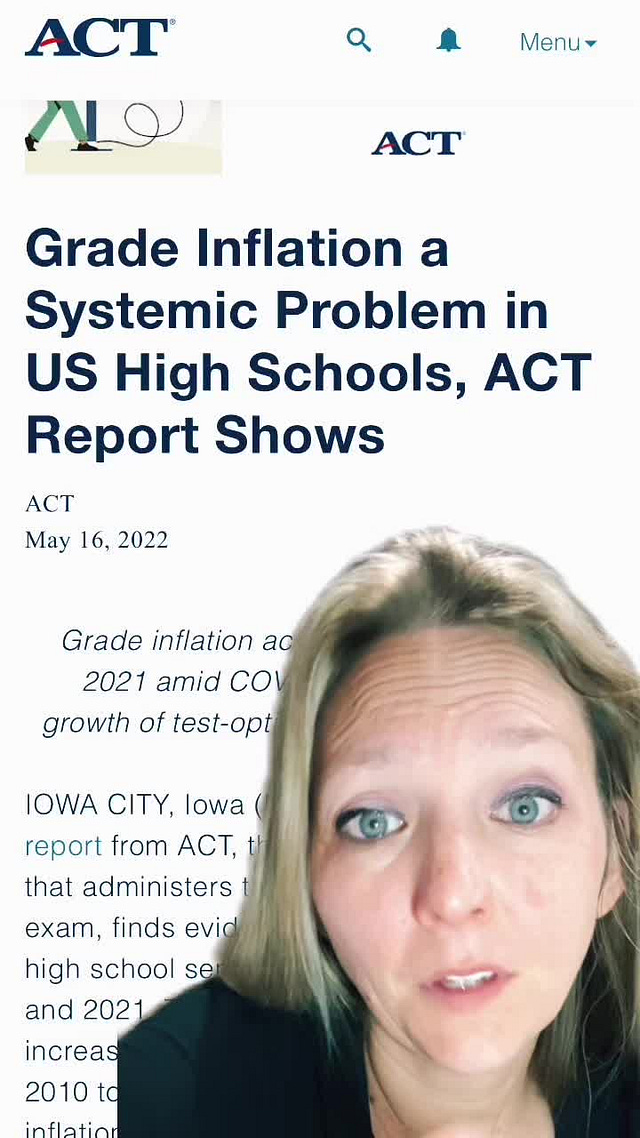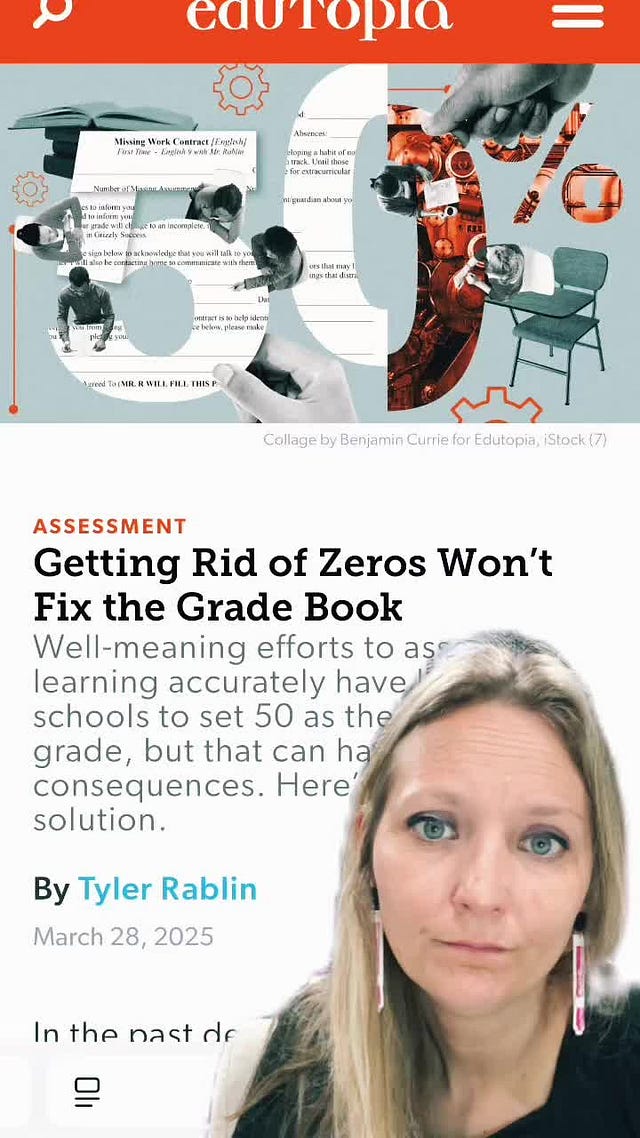Please Involve Teachers in Grading Policy Decisions
Because grading is more than math—it’s a reflection of what we believe students deserve
GPA Is Inflating. SATs Are Back. What Does That Mean for Your Grading Policy?
Let’s be real: traditional grading is under fire from all directions.
On one end, we’ve got GPA inflation. High school GPAs have risen steadily for two decades—but college readiness hasn’t. Students are earning better grades, but they’re not better prepared.
On the other end, colleges are adjusting. Some are tossing grades altogether. The Mastery Transcript Consortium (MTC) now includes 500+ high schools, and over 500 colleges accept transcripts that highlight critical thinking, collaboration, and skill mastery—not GPAs.
But here’s the twist: elite colleges like Harvard, Yale, Stanford, MIT, and public systems in Florida and Georgia are bringing back the SAT/ACT. Why? Because standardized scores—imperfect as they are—give colleges a way to assess readiness beyond inflated grades. They argue that test scores can reveal potential in students from under-resourced schools who might otherwise be overlooked.
Translation:
GPA is becoming a weaker signal.
Test scores are making a comeback.
Alternative transcripts are gaining traction.
So what’s the real takeaway?
Grading is more than math—it’s a mirror of what we believe students deserve.
If we hand out grades for compliance instead of learning—or inflate grades to spare feelings—we’re not helping students. We’re masking the truth. And colleges are responding by looking for other signals.
The Problem: We’re Making Grading Policy Without the People Who Live It
Grading is one of the most emotionally loaded, logistically complex, and philosophically inconsistent systems in education. Yet teachers—the people closest to students—are often excluded from shaping it.
Here’s what’s happening:
Only 13% of educators believe traditional A–F or numeric grades are “very effective” at giving feedback (EdWeek, 2023).
In The Opportunity Myth, 71% of students earned As or Bs while doing below-grade-level work.
Zero policies are inconsistent: The rise of 50% minimum grading has left teachers torn—between equity and accountability.
GPA inflation is real: ACT data shows grades going up, while readiness indicators drop.
Teachers are blamed for outcomes they can’t control, without shared criteria or systemwide clarity.
The Impact
When grading policies are handed down instead of co-created:
Teachers feel disempowered. Buy-in disappears.
Students get mixed messages. Confusion breeds gaming.
Leaders lose credibility. Grading becomes the hill everyone dies on.
The Solution: Involve Teachers in Grading Reform
Want a grading system that works? Design it with the people who do the grading. If you are in a leadership position, NOW is a great time to start these discussions so people gain clarity into the next school year.
A Grading Policy Protocol
🕒 Time: 60–90 mins | 👥 Group: Grade-level/content teams (4–8 people)
Step 1: Set the Frame
“Grading is the most powerful lever we have to signal what matters. Let’s build a system that reflects our values, aligns with what we teach, and is fair to the students we serve.”
Step 2: Reflect Individually
Prompt each team member to respond silently:
What do you believe the purpose of a grade is?
When have you felt confident about a grade you assigned?
When have you struggled with grading a student fairly?
Step 3: Analyze Current Practice
Ask:
Where do we have inconsistencies in our grading practices (late work, zeros, retakes, effort vs. mastery)?
How do these inconsistencies affect students? Parents? Us?
Review any available data:
% of missing work by course/grade level
Average GPA vs. test performance
Equity audits by student subgroup
Step 4: Discuss Guiding Questions
Use these to push the team’s thinking:
Are we grading what students know, or how well they comply?
What message are we sending about effort vs. learning?
What assumptions are built into our current policy?
Who benefits from our grading system—and who doesn’t?
Step 5: Design Together
Build shared principles for your team’s grading practices. Examples:
“Grades will reflect mastery of standards, not behavior or compliance.”
“Missing work must be addressed through timely intervention, not automatic failure.”
“We will use consistent criteria and communicate clearly with students and families.”
Final Thought
Grades don’t just rank students—they send messages.
About what matters.
About who matters.
About whether we believe students are capable of growth.
So please: involve teachers in grading policy decisions. They’re not just the ones writing the numbers. They’re the ones shaping what the numbers mean.
All of this led to some really interesting discussion. I would encourage you to join the conversation.












I love the idea here, and 50 min grade has been contentious at both schools I worked at that had this policy. But… how? I’m imagining teachers having very different ideas on wanting to keep the 50 as a min grade vs keeping the traditional grade which allow zeros. And if they don’t agree, who wins? Does each teacher or each department decide what works for them and, in that case, wouldn’t it also be confusing for the students? Isn’t part of school leadership making these difficult calls and explaining their rationale to teachers to get them on board? I’m just confused as to how co-creating with teachers will make the grading policy more effective vs coming in with research and explaining why a particular grading policy was adopted by the school. It feels like co-creating will still leave some teachers disgruntled and not entirely bought in while others leave more satisfied. Help!